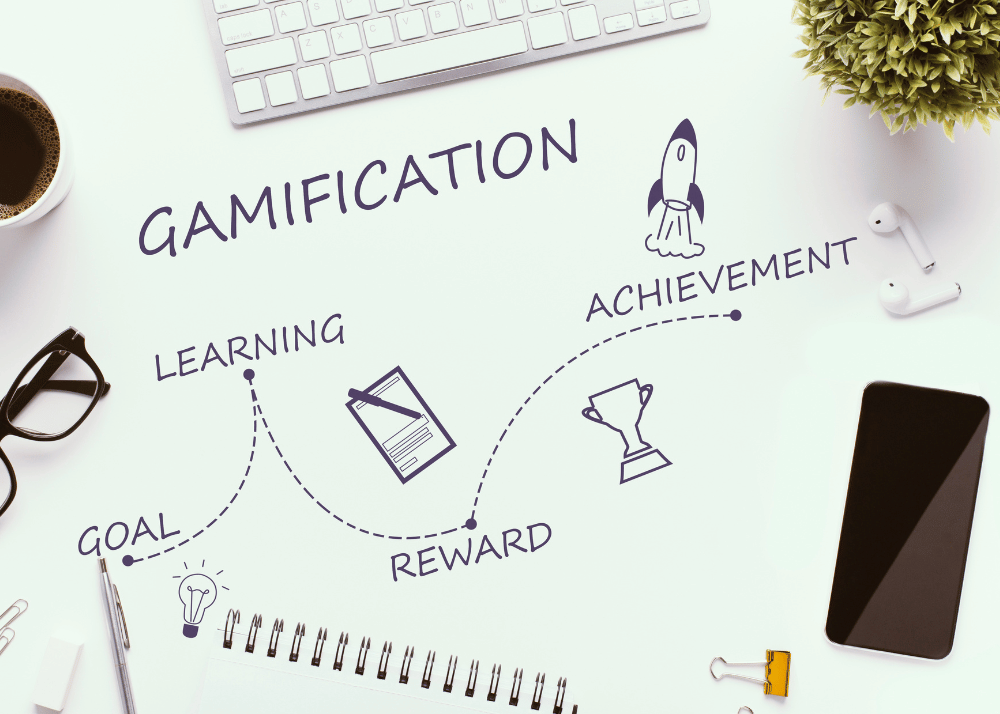
20 May Gamification in HR: Boosting Engagement and Productivity
In the ever-changing realm of human resources (HR), organizations are constantly searching for new and inventive methods to improve employee engagement and productivity. A strategy that has been gaining momentum and proving to be highly effective is gamification. By incorporating game-like elements into HR processes, companies can turn monotonous tasks into exciting activities, cultivate a competitive yet cooperative atmosphere, and achieve exceptional performance.
Understanding Gamification in HR
Gamification involves applying game design principles and mechanics to non-game contexts. This means incorporating elements such as point systems, leaderboards, badges, and challenges into various employee-related activities in HR. These can range from onboarding and training to performance management and wellness programs. The underlying principle is to tap into the natural human desires for competition, achievement, and recognition, thus making work more enjoyable and motivating.
Improving Employee Engagement
Boosting employee engagement is a key advantage of incorporating gamification in HR practices. Engaged employees tend to be more productive, content with their roles, and committed to their organizations. Gamification accomplishes this by injecting excitement into mundane tasks. For instance, a company could introduce a point-based system to incentivize the completion of training modules. As employees accumulate points and track their progress on a leaderboard, the training experience becomes not only more enjoyable but also fosters a culture of ongoing learning and growth.
Consider an onboarding process where new hires undergo a series of tasks that familiarize them with the company’s culture and policies. By using gamified elements such as earning badges for completing sections of the onboarding program or achieving a high score in a policy quiz, new employees are more likely to stay engaged and retain information. This creates a positive first impression and helps in building a solid foundation for their future with the company.
Boosting Productivity
Gamification also plays a significant role in enhancing productivity. By setting clear goals and providing instant feedback through gamified systems, employees can track their progress and stay motivated. For instance, sales teams can benefit from gamified dashboards that display real-time performance metrics. Sales representatives can see their progress toward targets, earn rewards for reaching milestones, and engage in healthy competition with colleagues.
Incorporating gamification in performance management systems can lead to more frequent and constructive feedback. Traditional annual reviews can be replaced with continuous performance tracking, where employees receive immediate feedback and rewards for achieving short-term objectives. This approach not only keeps employees motivated but also aligns their daily activities with the company’s strategic goals.
Promoting A Positive Work Environment
Gamification can greatly influence wellness programs, fostering a positive work culture. By incorporating game elements, companies can motivate employees to partake in health-focused endeavors like walking challenges, fitness classes, and stress management workshops. To encourage a healthier workforce, organizations can introduce wellness challenges that offer points or rewards for completing activities, monitoring steps, or attending mindfulness sessions. Additionally, integrating mobile apps that generate QR codes simplifies tracking and participation, ensuring a seamless experience for employees engaging in wellness activities.
By fostering a sense of community and friendly competition, gamified wellness programs can lead to improved physical and mental health among employees, reducing absenteeism and increasing overall productivity.
Implementing Gamification: Best Practices
To effectively implement gamification in HR, companies should follow some best practices:
Understand Your Audience: Different employees are motivated by different factors. It’s essential to understand what drives your workforce and tailor gamified elements accordingly.
Set Clear Objectives: Define the goals you want to achieve with gamification. Whether it’s enhancing engagement, improving performance, or promoting wellness, clear objectives will guide the design of your gamified systems.
Ensure Fairness: Gamification should promote positive behavior and be inclusive. Ensure that all employees have an equal opportunity to participate and succeed.
Provide Meaningful Rewards: The rewards offered through gamification should be meaningful and valued by employees. This could range from recognition and badges to tangible rewards such as bonuses or extra time off.
Keep It Simple: Overly complex gamification systems can be counterproductive. Keep the design simple and intuitive to ensure maximum participation.
Conclusion
Gamification in HR is more than just a trend; it’s a strategic approach to driving engagement and productivity. By leveraging game mechanics, companies can make everyday tasks more enjoyable, encourage continuous development, and promote a healthy work culture. As organizations continue to innovate, gamification will undoubtedly play a pivotal role in shaping the future of HR, making work more fulfilling and fun for employees everywhere.
No Comments